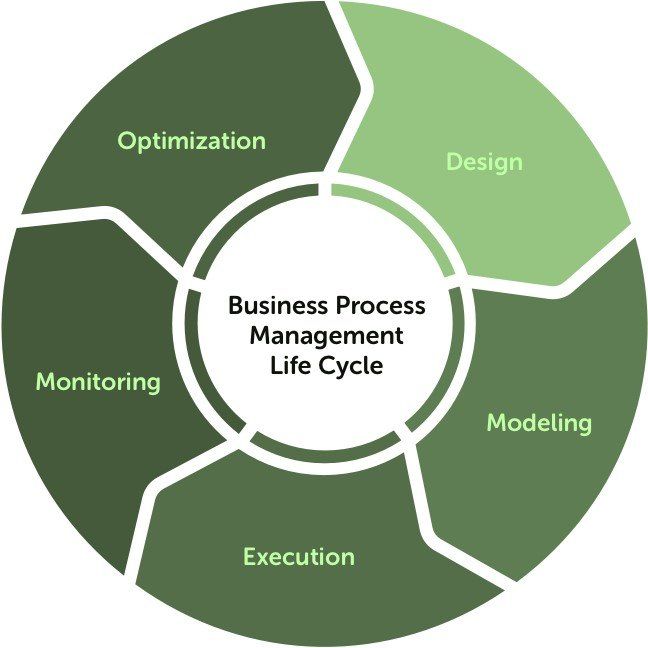Business process management is cyclical process involving planning, implementation, and evaluation. Workflow plays a key role.
At a high level, teams can design their process and then implement/execute the process using workflow. As workflows run, businesses monitor, analyze, and optimize processes. Business processes often require workflows to accommodate business needs such as:
- Event-based or message-based process initiation
- Complex and high-frequency decision processing
- Real-time processing
- Connections to different applications and data sources
In the case of event-based processes, FlowWright can either wait for incoming messages to continue processing or publish events to a publish/subscribe bus. FlowWright includes its own Enterprise Services Bus (but you can use RabbitMQ or MSMQ or other) and the ESB is a good way to offload control and processing so that the workflow engine can stick to processing workflows in order to optimize process execution performance.
Where some processes utilize complex and high-frequency decisions to control business process flow, FlowWright provides 2 ways to manage decisions: 1) by using graphical decision steps for evaluating or computing expressions and 2) through the use of FlowWright “Decision Tables” where analysts can define tables of decisions and then use them within workflows.
Real-time processing is a common ask. FlowWright's implementation of Microservices addresses this need. Real time processing is preferred when decisions and computations must be made at high speed. Previously, monolithic architectures prevented this workflow application, but today, using workflows that run in memory, real-time execution using FlowWright Microservices is possible.
Current data-driven architectures connect many data sources, and these data sources are no longer just databases: they can be oAuth connections, storage systems, remote connections and more. Data comes from multiple sources in a variety of formats/data types in order to be used primarily in decision-based processes. FlowWright supports these connections through its .NET and REST APIs, through use of oAuth as needed, and through its predefined connectors to commonly used applications and databases.
FlowWright's implementation of business process management is much more than workflow alone. Contact us to learn more.







